A detailed Go board game (weiqi in China, baduk in Korea) guide written by Alexandr Dinershteyn, 7-time European champion. Here you’ll find everything you need to know: why it’s worth trying to play, how and where to start.

Contents
Geography of Go
The game of Go is most popular in China, where it was invented 4,000 years ago. 60 million people are familiar with its rules in China. In Korea, there are 8 million Go enthusiasts. In this country there is even a special TV channel where Go is shown exclusively 24 hours a day. In 1996, 36.3% of all Koreans knew how to play Go. In Japan, the popularity of the game has noticeably decreased. Once there were 15 million players, but nowadays there are only 1.5 million.
In the US, Europe and Africa, the game is much less known. People still confuse it with othello and renju.
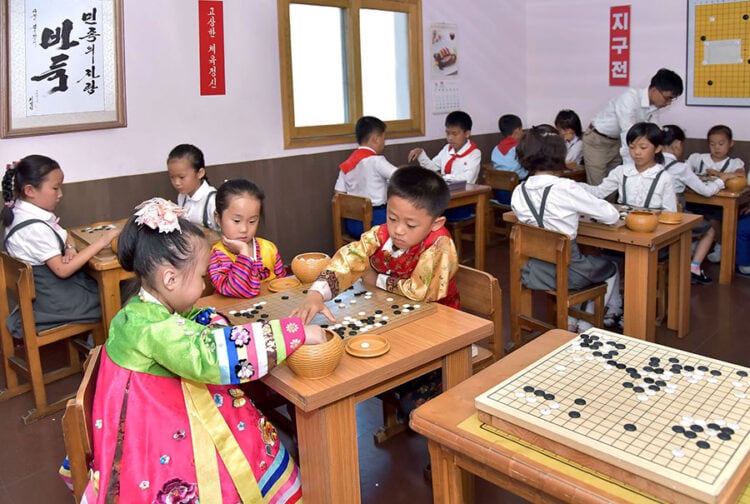
Famous people who have played Go
“Engaging in the game of Go is a much better endeavor than indulging in idleness and eating rice all day long!” – These words are often interpreted as reflecting Confucius’ negative attitude towards the game of Go, which is a big mistake.
The fact is that Confucius was greatly disappointed by the behavior of officials who spent the whole day engaged in gluttony and idleness. As an example for a more dignified pastime, he recommended managers to engage in the game of Go. And in Confucius’ book “Lun yu” one can find such a quote:
“Only masters of Go can resemble saints when playing the game.”
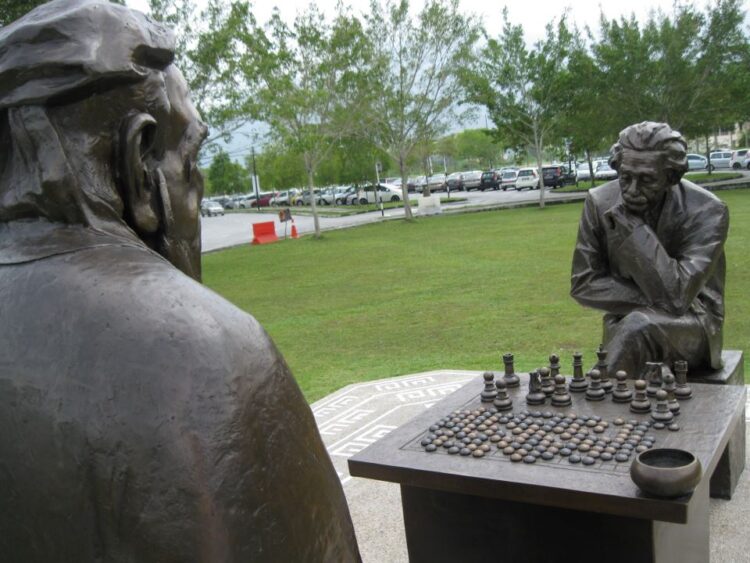
Confucius was the most famous Go player from the past. In addition to him, many emperors of China, Korea and Japan, samurai and military leaders played Go.
Sergey Brin, Jack Ma, Bill Gates, Albert Einstein, Moon Jaein (former president of South Korea), Emanuel Lasker, Vitalik Buterin (founder of Ethereum) and other well-known people love this game.
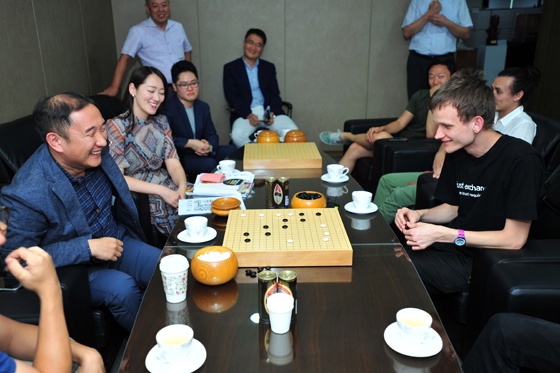
A few quotes:
“For fifty years I have been trying to learn the game. I have mastered the tactics to a certain extent; the strategy, however, is still a mystery to me. It will probably take me another fifty years to unravel it. And if I had learned about Go earlier, I might never have become world chess champion»
Emanuel Lasker, legendary chess player
“I played Go so much during my studies that my Google partner Larry Page was very unhappy that I was spending so much time playing the game. Go is a very beautiful game and I think you can learn a lot of things in life with it, a lot more than a game like chess. When you watch the great masters play Go, it is comparable to the epitome of living beauty. I’m delighted that we’ve been able to translate the beauty of Go into the art of the machine.”
Sergey Brin, founder of Google
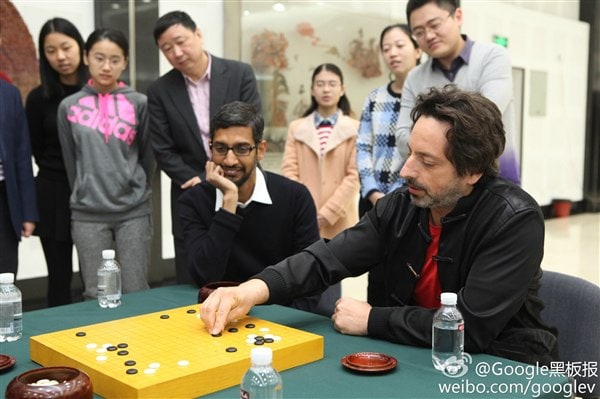
“When I was young, I wanted to be the world’s best chess player. I also wanted to be the world’s best Go player. I wanted to keep the IBM-Microsoft partnership alive for everyone’s benefit, but that didn’t work out either. There are people I wanted to hire but couldn’t. All in all, I’ve had enough disappointments in my life.”
Bill Gates, one of the founders of Microsoft
The benefits of Go
The game of Go gives children and adults a lot of joy, at the same time it has a huge impact on their mental abilities, the development of logic and spatial imagination.
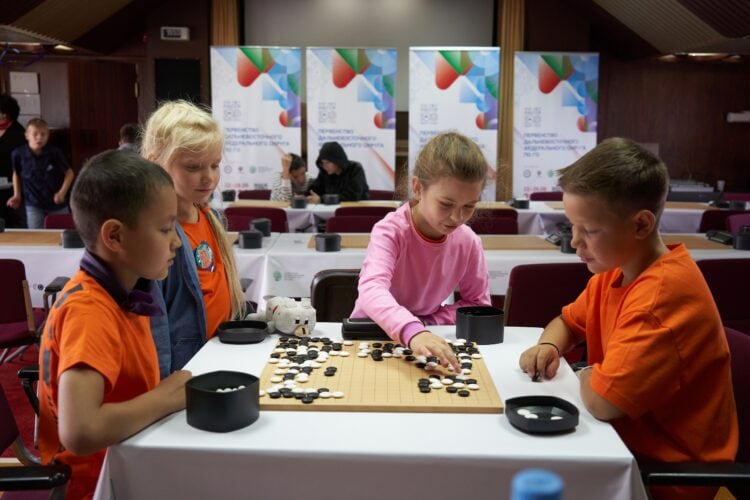
For some people the game of Go is a joyful and at the same time agonizing creative process, for others it is an uncompromising struggle that tests the will and strength of spirit, for others it is akin to a ritual, almost meditation. But in all cases Go attracts with its depth, mystery and clearly palpable astonishing complexity.
Go teaches you to use your time rationally. Games are usually played with a clock, limiting the time you have to think about your moves. Few people enjoy losing good positions regularly due to time pressure. It teaches you to use the time allotted for the game more sparingly.
The game teaches you to calculate options for yourself and your opponent. This allows you to recognize the interests of others, and, depending on the situation, to satisfy those interests or hinder them.
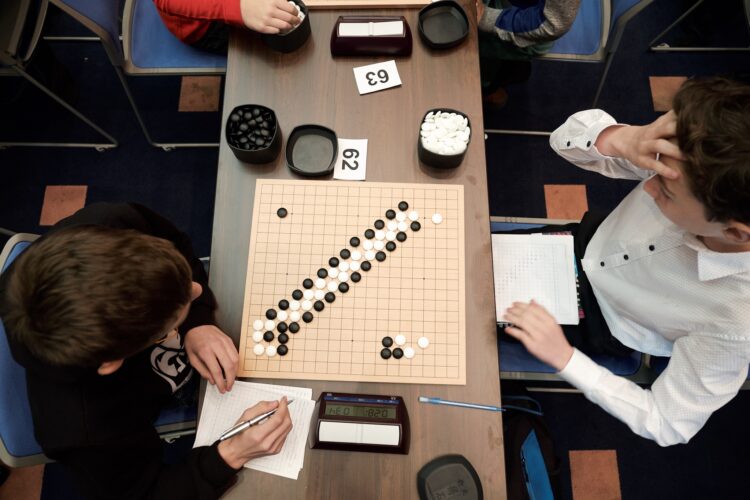
Go improves the ability to concentrate. It teaches you to direct the flow of attention exactly where you need it and exactly when you need it.

This game involves both hemispheres of the brain: success requires both analytical thinking (the ability to estimate profits, calculate options) and intuition (the ability to find harmony, build beautiful shapes).
Many well-known corporations (including Google, Microsoft, Samsung, LG, Japan Airlines) use Go’s strategic principles in management, choosing development directions, and entering new markets. In the East, Go is also used to develop military and state management strategies.
Go is useful for all people who have to make difficult decisions. It teaches that when making a decision it is important not to make a choice in favor of immediate benefits, but to emphasize the main thing at the moment, rejecting the secondary (which itself can also be important).
You can’t move a stone that has been set, just as you can’t change what has already been said or done. Go teaches you to recognize mistakes made, to accept them and look for ways to benefit from them. One cannot move the stones of one’s opponent, just as one cannot change another person. In this sense, Go has a deep philosophical basis: the game teaches you to accept other people for who they are.
Go develops both emotional and social intelligence.
Go breaks down language barriers. After all, to play with a person from another country, you only need to know a few standard phrases in English: “Hello”, “Have a good game”, “Thank you for the game”. On the other hand, Go is a good reason to learn a language by playing with native speakers. And participation in tournaments is an opportunity to meet and make friends with people from other countries – after all, the game is played all over the world.
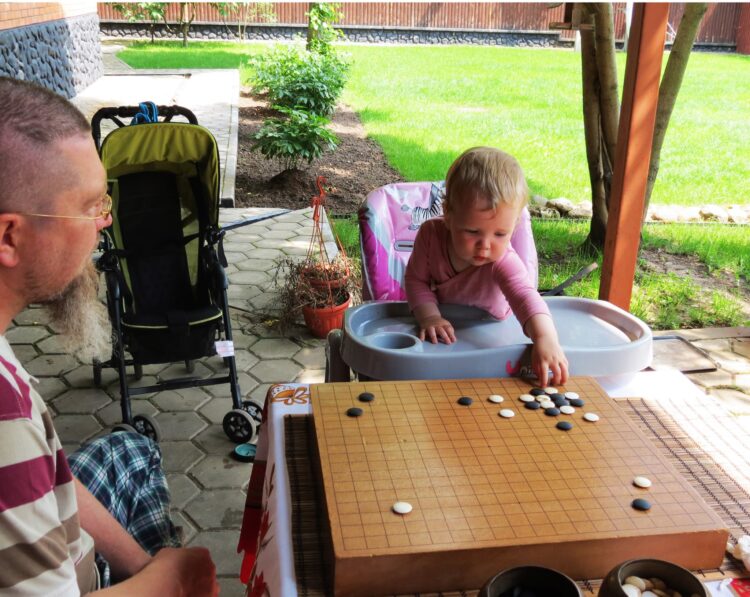
The best age to start learning Go is 4-5 years old. By starting to play at such a young age, you may find your child has an outstanding aptitude for the game. Who knows, maybe he is destined to become a world champion one day, displacing the masters of Japan, China and South Korea on this stage. After all, no one can invalidate the sporting component – and successful Go masters earn no less than the world’s leading chess players.
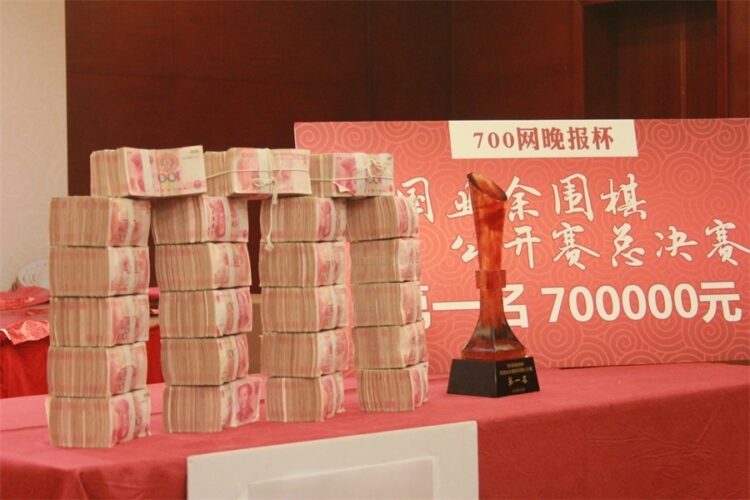
Go is not only good for children. There is currently no cure for Alzheimer’s disease, which affects some 30 million people worldwide, but seniors in the early stages of senile dementia can benefit from the advice of internationally recognized Japanese neurosurgeon Kaneko Mitsuo. Kaneko has determined that victims of this devastating condition can halt its progression if they start playing Go in the early stages of the disease or before it occurs. Brain scans have shown atrophy of a significant part of the right hemisphere of dementia patients, and Go activity strengthens and develops this part of the brain.
Remarkably, cases of Alzheimer’s disease or dementia have never been observed among professional Go players.
How to play Go
The rules of the game are extremely simple – you can learn them in 5 minutes. There is a board and two sets of pieces (361 in total), which are called stones – black and white stones. The battle is between two players who take turns placing stones on line intersections, starting with a completely empty board. The goal is to build more territory than your opponent. You can do this peacefully, or you can kill your opponent’s stones during the game. During the game the board is filled with stones of two colors. And at the very end of the game, players refuse to make a move (pass) and proceed to counting territories.
The boards come in 3 different sizes. For beginners: 9×9. For more experienced players: 13×13. And starting from the 20th kyu, you can move to a large 19×19 board. All major tournaments are held using this board. Often there are two-sided boards. At the end of our article we will tell you more about how to choose the right Go set for purchase.
Here’s the best Go rules video on YouTube:
Differences between Go and chess

There are many important differences between Go and chess.
First, in chess all pieces are different, while in Go the stones are the same – they have equal value.
Second, in chess, having made an unsuccessful move, any piece, except pawns, can always be returned to its previous position. In Go, a stone placed on the board can no longer be moved, only removed in case it’s captured by the opponent.
Third, chess is a game of destroying the opponent, where the ultimate goal is his surrender, while Go is a game aimed at securing more territory on the board, which requires negotiation mastery, because even a small advantage is enough to win the game.
It is known that many famous chess players love to play Go. Among them are grandmasters Emmanuel Lasker, Alexander Morozevich, Vladimir Fedoseyev and Tiger-Hilarp Personn.
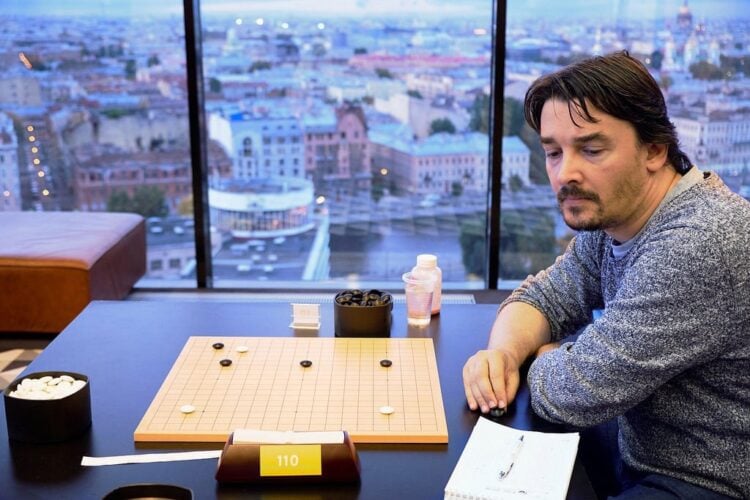
Who is the world Go champion?
It is expected that in 2024 there will be 9 tournaments, which are equal in status to world championships. Here they are:
1. Ing Cup (Taiwan, held every 4 years). This is the tournament with the largest first prize, 400 thousand US dollars.
2-3. Two LG Cups (Korea) – the 28th, where the final match is left to be played and the 29th.
4. Chunlan Cup (China)
5. Quzhou-Lanke Cup (China)
6. Samsung World Go Masters (Korea)
7. MLILY Cup (China)
8. ENN Cup (China)
And the ninth tournament is expected to be a new Korean competition at the end of 2024, the winner of which for the first time in history will be determined by a round robin system (instead of the traditional single-elimination). Nine masters will play in the tournament: 4 from South Korea, 2 from China, 1 from Japan, 1 from Taiwan and 1 will be added via wildcard.
Theoretically, there could be many different Go world champions each year. This is the main difference between Go and chess. In chess there is always a single champion.
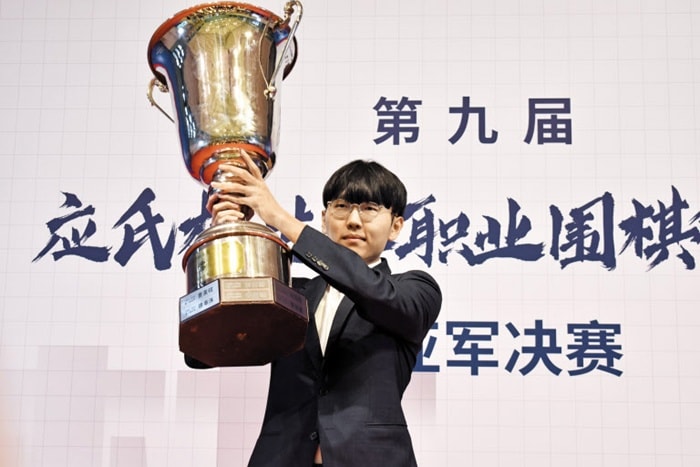
Is there such a thing as a draw in Go?
There is, but it happens very rarely. About one game out of 1000. This distinguishes Go from chess and checkers. In order to ensure that there are no draws in Go, the compensation for the right of the first move (komi) almost always contains an extra 0.5 points. This is usually 6.5 points for 19×19 board.
Handicap games
In Go, unlike chess and other games, it is common to play with handicap if there is a big difference in strength between two players. This makes the game more interesting and equalizes the chances of winning.
According to Japanese rules, the handicap stones (from 2 to 9) are placed on special points on the board. Under Chinese rules, the weakest player can make from 2 to 9 moves in a row in the initial position on any points of their choosing.
It is generally considered that a difference of one rank equals one stone of handicap. For example, a 5 kyu should play a 3 kyu with black stones, putting two stones of handicap on the board.
The strongest AI can give professional players 2-3 stones of handicap. There were cases of winning even on 4 stones.
A tip for those who play with handicap. Black is advised to play as safely as possible, avoiding difficult fights. White’s task is then to impose the fight, using as few standard moves as possible.
Kyu/dan ranking system
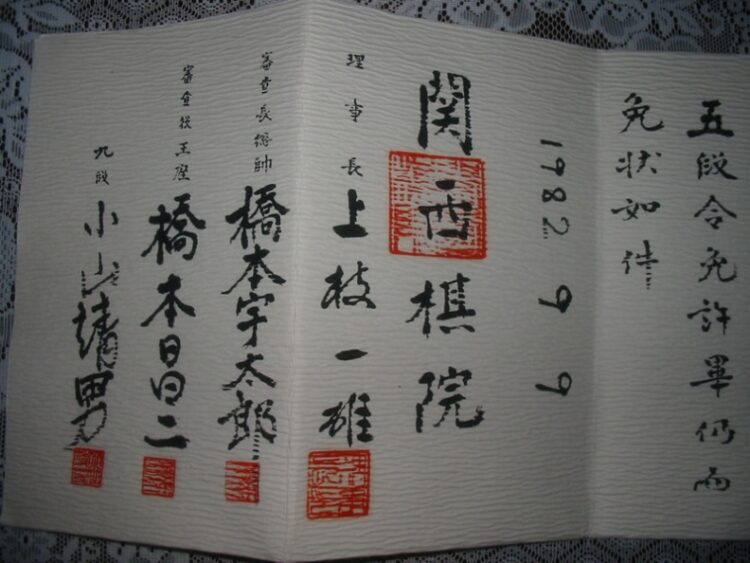
The kyu and dan system was originally invented for the game of Go. Later it was used in Karate, Aikido and other martial arts. In Go we don’t use belts however. Beginners have “kyu” ranks, while experts have “dan” ranks.
A person who has reached the level of 7th amateur dan can think about becoming a professional.
In Go, this means qualifying in a country with a professional system. In China, Korea and Japan, the strongest professionals can earn 1-1.5 million dollars a year. Professional dans start from the first dan and go up to the 9th dan.
Professionals have tournaments that amateurs are usually not allowed to enter. Although there was one case in Go history when a world amateur champion was able to take first place in a Chinese professional tournament.
It used to be thought that a ninth dan played stronger than a first dan, with defeats of ninth dans by first dans being rare. In Japan, such games were even cited in yearbooks as sensational. But nowadays, many older Japanese and Korean players of average playing strength have reached the ninth dan, so such defeats are no longer a surprise to anyone. Excluding current title holders, a match on, say, 20 boards between ninth dans and first dans in Japan or Korea may well end in a victory for the newly minted pro. The Chinese ninth dans, on the other hand, should be able to win such a match, as in China, one must win the world championship to achieve the rank of 9th dan.
Computer Go
It is impossible to avoid this topic, as computers have a great influence on modern game theory. It all started with a historic match that took place on March 9-15, 2016. For the first time in the history of the game, the AlphaGo program was able to defeat a professional 9 dan player 4:1. This event marked the beginning of the neural network boom that continues to this day.

Experts predicted that the emergence of strong programs would diminish Asian dominance in Go, as happened with chess in the USSR. However, this has not been the case. The leading countries in the Go world have not changed in recent years, with China and Korea sharing first place, followed by Japan and Taiwan, and then the USA, Russia, and North Korea.
The AI made Go noticeably more boring. Now all top professionals try to play in a similar style – the way the computer tells them to. Only in Japan you can find masters who like to play in their own unique style, regardless of how the AI evaluates their ideas.
Before the AlphaGo triumph, programs required 3-4 stones of handicap from professionals. Masters did not use them in studying Go. Also, unlike chess, few professionals use databases in Go, most players prefer to keep variations in their heads.
Where to play Go online
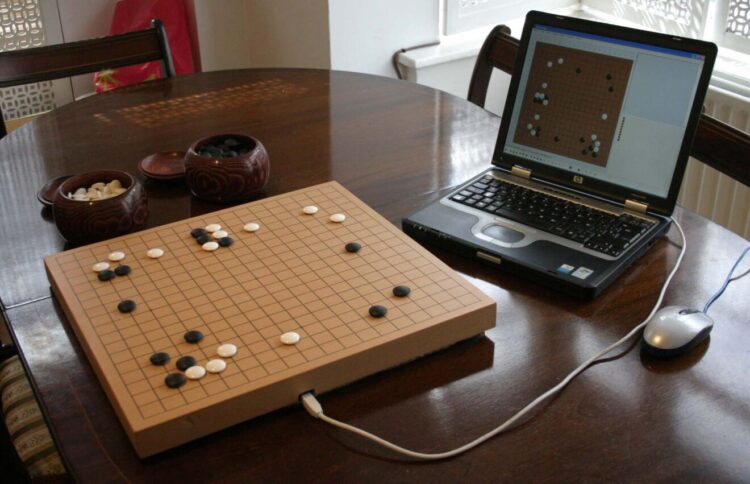
GoQuest – Best choice for beginners. For those who play on small boards. With this board size, it’s easy to play Go from your phone. An unusual feature that is only found here – you don’t know the strength of your opponent until you complete a game with them.
KGS – One of the oldest servers. Not the largest in terms of player numbers, but very convenient for teaching. Games from US and European tournaments are often broadcast here.
IGS – An old Japanese server, with an outdated interface.
Tygem -The largest server in Korea. Tens of thousands of people, including top pros, are here during peak hours. Here you can watch game broadcasts from Asian pro tournaments.
Fox – One of the largest Chinese servers. You can find an opponent here in seconds via Automatch. You can also watch games of top masters and broadcasts from Asian tournaments.
Wbaduk – Another Korean server. It is not much different from Tygem in terms of player composition, but with slightly fewer players.
OGS (Online Go Server) and DGS (Dragon Go Server) – For those who prefer slower-paced Go by correspondence. Each game can last a month, or even longer. You can also play blitz here.
Tournaments
Even if you are new to Go, I would advise you to test your skills in offline tournaments. Even beginners usually participate in these tournaments. The most common format is called McMahon, which pairs players of similar strength. This way you can rest assured that you won’t have to face a 7th dan in the first game who will crush and slaughter you.
At the end of the first tournament, you will receive an official rank (dan/kyu) and rating. But keep in mind that it may differ significantly from your online ranking.
How to progress and become a strong player
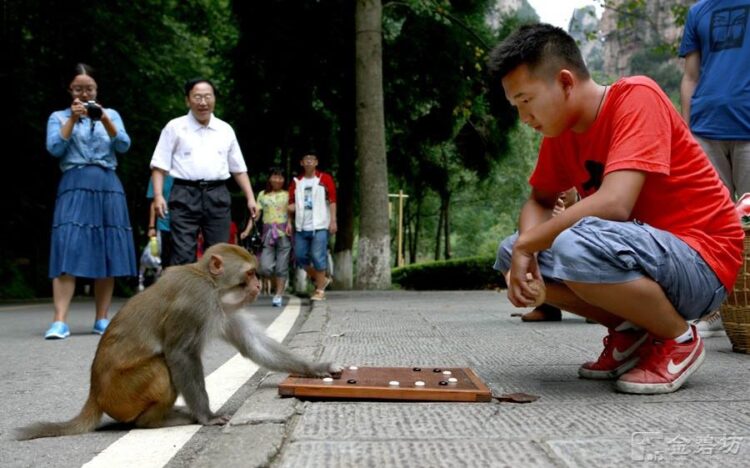
Beginners: It is enough to find good books. Beginner books usually have a lot of problems and you need to solve them. It is not recommended to play a lot of games. It is better to spend time on solving problems and watching the games of experienced masters in the following ratio: 40 minutes – solving problems/ 20 minutes – watching games.
Beginning intermediate level: increase your study time. Play Go every other day – live or online. Continue solving problems and watching pro games. When studying games from books, focus on the first 100 moves – that’s enough.
Intermediate level: Pay more attention to the game and then analyze your games. If you play online, make sure you analyze your games with the help of AI, like KataGo (Lizzie). If playing live, discuss the game with your opponent. Continue solving problems and studying pro games, dedicating at least 5-10 minutes daily to problem-solving. Participate in offline tournaments if possible.
3-dan and stronger: Make sure you find a teacher with whom you can analyze your games. At this level, reviewing your own games is crucial.
“They say that if you get your first professional dan at 15, you’re a genius. 18 is the standard age. But at 20, it’s too late. If you get 1st dan at 20, you can forget about fighting for titles and reaching beyond the 5th pro dan.”
Cho Namchol, 9-dan, No. 1 in Korean Go in 1940-1970.
Kim Sungrae, 5-dan turned pro at the age of 33 (in 1996), setting a record in Korea. No one in Korea has turned pro later than that, but in Europe, Jan Simara became pro at 38, setting a world record.
If you’re not planning to turn pro… It is believed that only 1% of all players can reach their first amateur dan within a year of learning the rules of the game. Achieving this indicates great talent!
Legendary chess grandmaster Grigory Levenfish once advised amateurs asking how to improve quickly: “Don’t play for nothing, but start playing for money. Only then will you learn to play well.”
In Korea, many people follow this advice. In Go clubs, they play exclusively for money. And if not for money, then for a can of Coca-Cola or dinner.
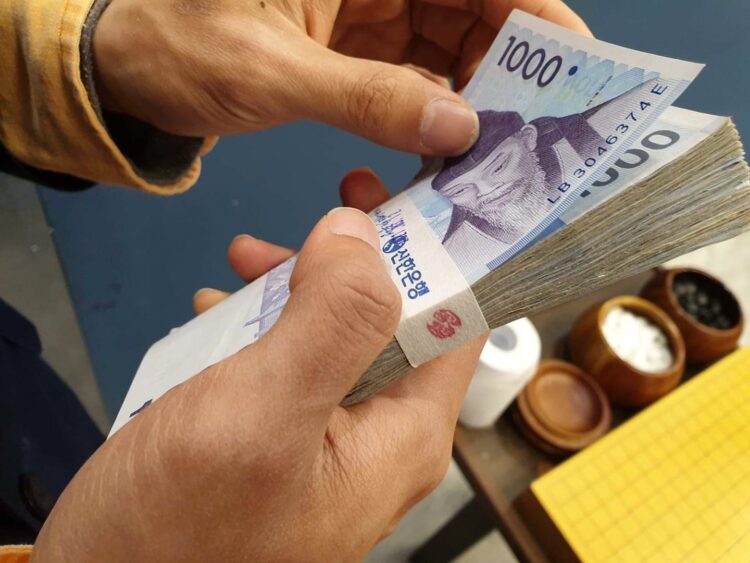
Go schools
In Asian countries, there are schools where children learn only Go from morning to evening 6-7 days a week. Their goal is to win the qualifying tournament for the first professional dan.
The most famous school in history is the Kitani Minoru dojo (1909-1975). It has produced 54 Go professionals, including many stars of Japanese Go. Even masters from Korea came to study with him. Nowadays, there is no school of this level in Japan, and the Japanese players themselves go to Korea for training.
I myself spent five years in Korea, where I studied with the strongest children, who later became famous Korean professionals. Many other top European masters have trained in China.
If you don’t plan to become a pro, but just want to become stronger in Go, you don’t have to go to China or Korea for training. You can study on your own by installing the Lizzie program with KataGo AI. And if you are interested in systematized Go lessons, a good option is the Go Magic online school, where I am one of the teachers.
Go communities
- /r/baduk — a community of game enthusiasts on Reddit. The feed consists of news and questions from beginners.
- LifeIn19×19 Forum — the largest and most active place for Go if you’re not considering Asian websites.
- https://vk.com/go_secrets – The largest VK group in Russian from the author of this article
Websites with Go problems
- Tsumego Hero. A free website with Go problems. There is a rating list and percentage of correctly solved problems. New problems are added regularly
- Go Problems — One of the oldest websites on Go. Many of the problems were added by users. Daily updates.
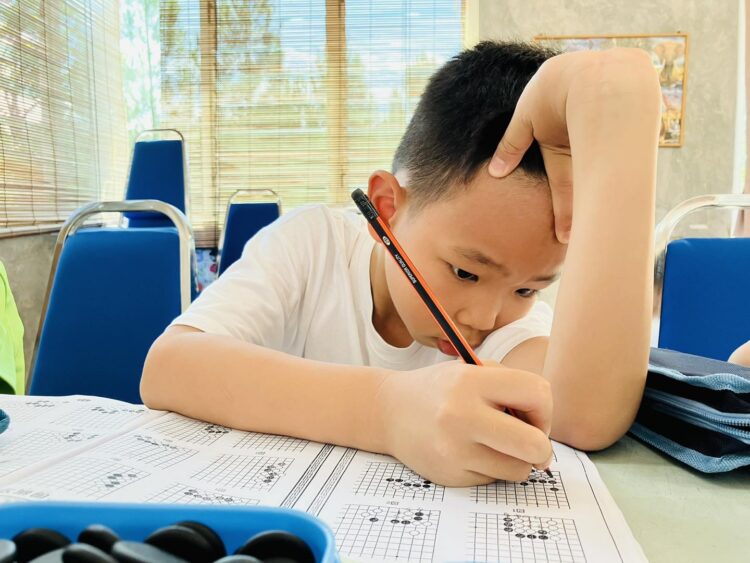
If you are solving problems from books, pick the ones where you can solve 4 out of 5 problems without spending more than a minute on each one. Remember that even looking at the solutions makes you stronger.
Movies and TV series available in English
“Hikaru no Go” — Most players discovered and fell in love with Go through this anime. We recently conducted a poll among Russian Go players about how they got to know the game. According to the results, the anime “Hikaru and Go” took first place with 27% of the votes.
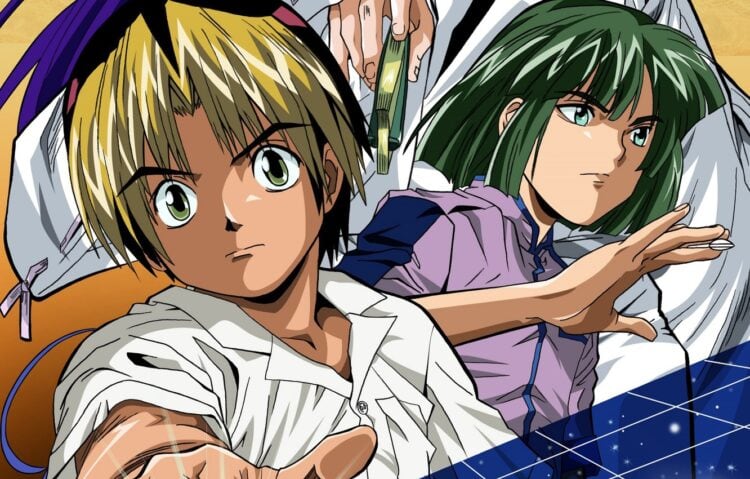
- “Qi hun” — A Chinese remake of Hikaru no Go in a drama series style. Usually, a remake is worse than the original, but this movie is an exception to the rule.
- “The Stone” — A crime drama film, considered one of the best Go-themed movies, portraying the game’s philosophy. It’s not a commercial movie. Its director was dying of cancer and just wanted to leave a memory behind. The movie shows the underside of Go, focusing on those who play Go for money.
- “The Divine Move” — A Hollywood-style movie about people who play go for money.
- “The Divine Move 2: The Wrathful” — Similar to The Divine Move, just with a new storyline. Another typical action movie;
- “AlphaGo” — A documentary about the historic moment in 2016 when a machine defeated a professional Go player. This victory was a significant milestone not only for Go players but also for AI specialists, marking the active development of neural networks. You can watch this movie for free on YouTube;
- “The Surrounding Game” — This is a movie that was made thanks to crowdfunding. It tells the story of Go game in the United States, and how the first professional players’ federation in the West was founded;
- “The Match” — Based on the true story of two legendary Korean Go players, Cho Hunhyun and his student Lee Changho. The movie is scheduled to premiere soon.
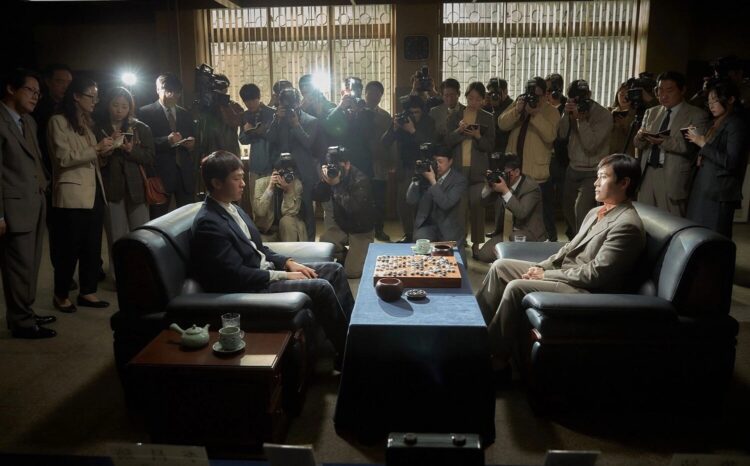
How to choose a Go set?
You’re lucky. You can buy a Go set in a couple of clicks. Players of past generations, especially outside of Asian countries, had a much harder time. The sets were made of all kinds of things! Buttons! Magnetic alphabet! Even abacus pieces.

The best gobans ( tables for playing Go while sitting on the floor) in Japan are made of kaya wood (aka Torreya nucifera). Masters use only the wood that is several hundred (sometimes up to 1000) years old, and wait until it dies (in Japan, this is due to a ban on cutting down live kaya trees). Kaya grows in Japan and on Jeju Island in South Korea. There is also Chinese kaya, but its value is lower. During the drying process, only 10% of the billets are crack-free. The remaining 90% are no longer suitable for the production of whole gobans. Such wood is not thrown away. They cut it into pieces and make cheaper gobans from it, glued from pieces (usually 3-5). The main difficulty here is to join these pieces according to the pattern on the front side of the future goban.
Kaya wood has an elastic dense texture, it has a pleasant yellow color, makes a beautiful clear sound when putting a stone on it and forms a small dent from the impact of the stone, which then magically corrects itself.
The quality and price of kaya gobans depends on many factors, the most important of which is the cut of the tree. There are many ways of cutting the trunk of a tree, each of which creates its own characteristic pattern on the surface, edges and sides of the goban. The best gobans have a straight pattern on the playing surface and the sides. This is achieved by a method of cutting the wood called Masame.
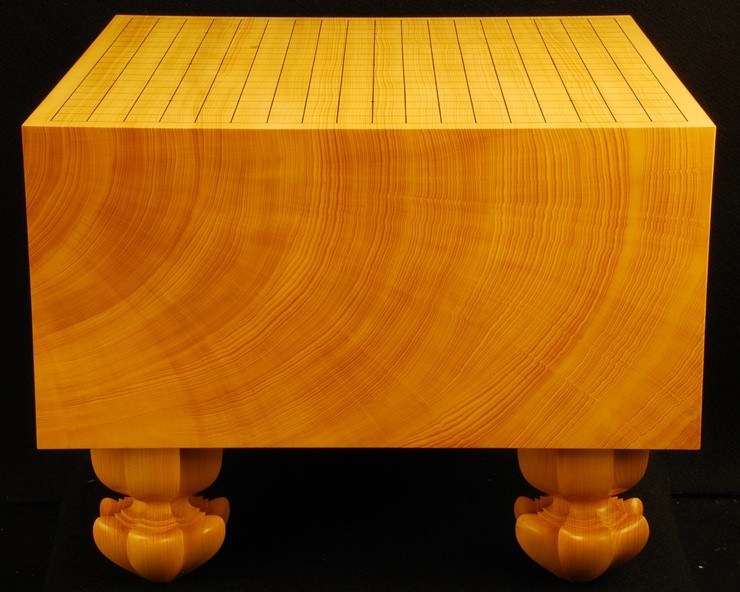
The goban playing grid was traditionally painted with a samurai katana. The master made a series of precise cuts, into which he then rubbed thick black paint, after which the surface of the goban was polished and rubbed with oil. One wrong move and the top layer of wood had to be completely removed, and the lines reapplied. This labor-intensive and impractical method has disappeared, and now even Japanese companies, which have a centuries-old tradition, use special machines for drawing lines. A good kaya goban can cost hundreds of thousands of dollars.
The best stones are made from clam shells. The thicker they are, the more expensive they are. In Japan, the price also differs depending on the arrangement of lines on the stone, but personally it’s not obvious to me which ones are prettier
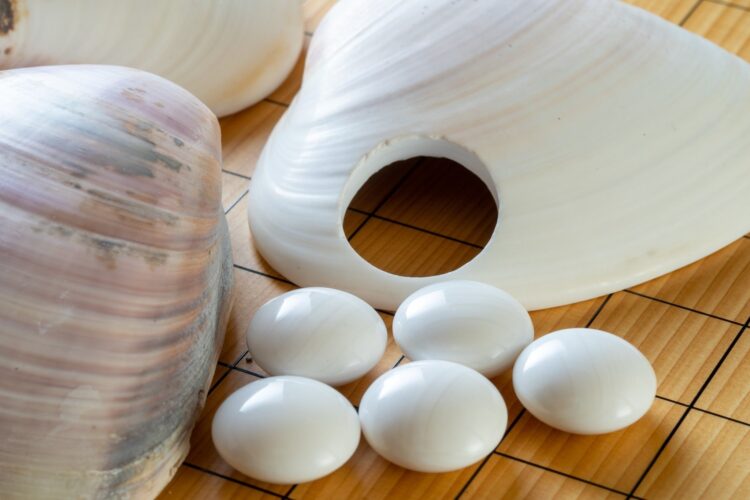
If you don’t have a huge budget of a hundred thousand dollars, you can find simpler Go sets. What to look out for:
Check the number of lines. You won’t believe it, but there are boards with too many or too few. “Buy 19, get 20 for free” — this shouldn’t interest you. Under the guise of a Go board, unscrupulous sellers can easily sell you a renju board. It will only have 15 lines and no more than 100 stones – you can still play Go on them, but it will feel different compared to the traditional board size.
For a 19×19 set, there should be 361 stones, not 280, for example, as in this set. You may not have enough for a full game. And even a prisoner exchange won’t always help.
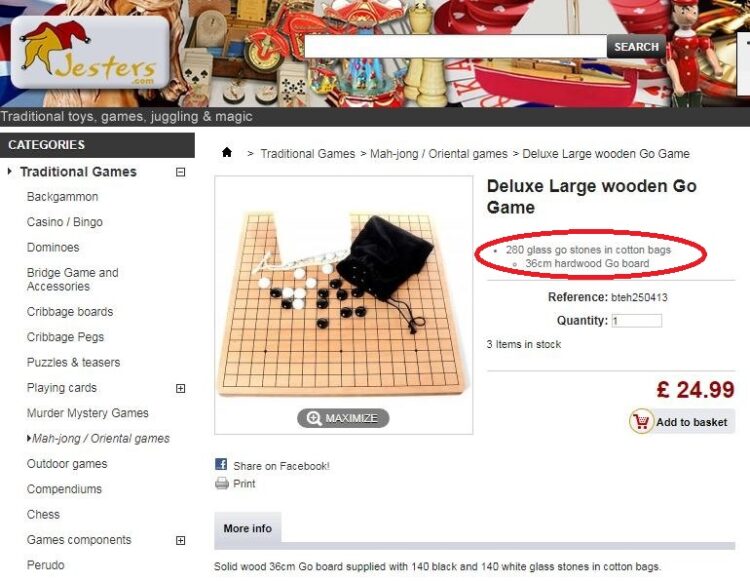
A folding board? Not a good choice. It will always have a “hump” in the center, where it will be inconvenient to put stones:
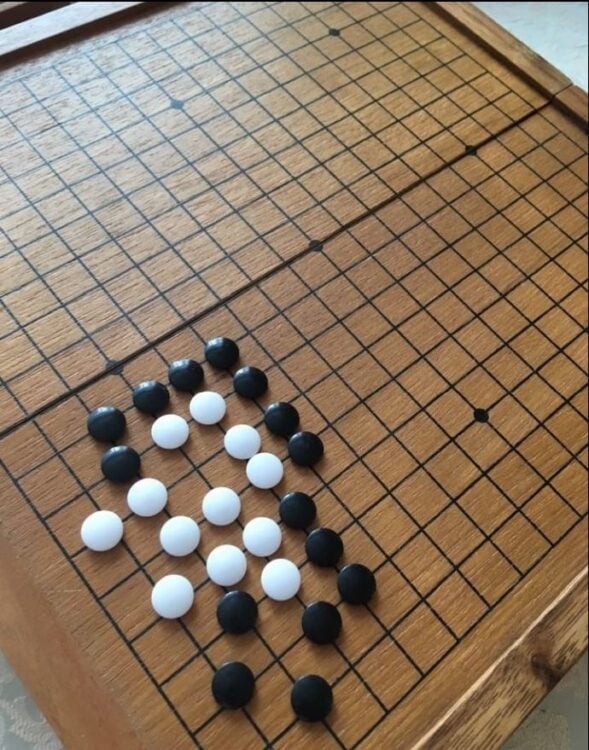
Pay attention to the edges. I have seen many sets with a non-functioning first line. The line of defeat, as the proverb goes. Why would you want to put stones there?
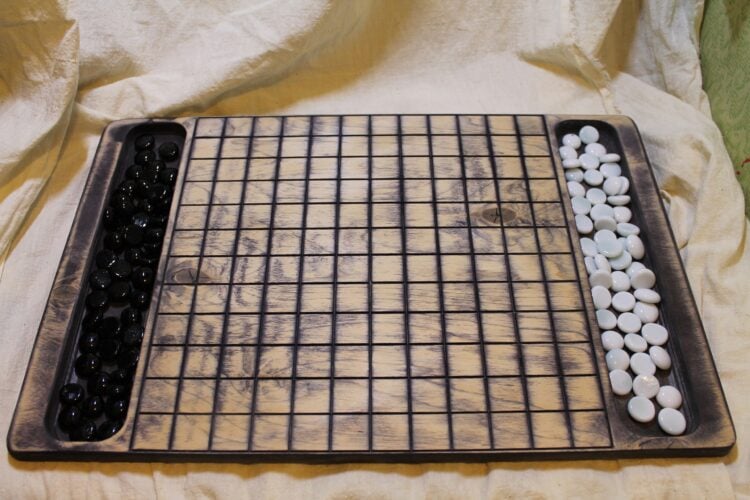
There is nothing better than a set made of wood. But if you take a Chinese board, which is glued together from several pieces, you are almost guaranteed to see your board warp in a short time:

This is because the Chinese Go board manufacturers save time and often don’t dry the wood properly. And storing the board near a radiator or on a windowsill will accelerate the warping process. Ideally, your board should be made from a solid piece of wood, although this is noticeably more expensive. I would only recommend getting Japanese boards from glued timber. In my opinion, even a used board or goban from Japan is better than its Chinese counterpart. Korea is somewhere in the middle. Better quality than in China, but worse than in Japan.
If it’s gobans with legs you’re interested in, those legs should be removable – this way you can always remove the legs and play on the table without them. So legs are always a plus, even if you, unlike the Japanese, are not used to playing while sitting on the floor.
Note that a good goban should have a notch at the bottom – these gobans have a nicer sound of putting the stone on the board. They are also less likely to crack.

The choice of stones is equally important. The most ideal stone thickness is 9 -9.5 mm. In any case, I would not recommend to take any stones thinner than 8 mm. Often there are sets with 7.5 mm shell – it is still a bit thin, it is uncomfortable to hold such stones in your hands. I do not recommend buying stones made of plastic. They are too light and therefore easy to shift by accident when playing.
If you buy stones in China, pay attention to their shape. Chinese players often like to use these:
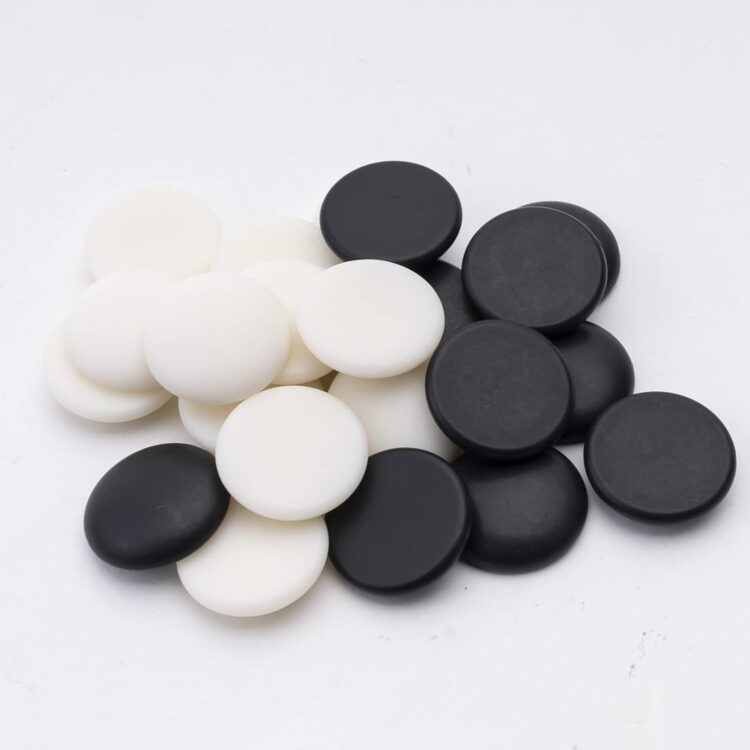
On one side they are flat – it is on this side that they are placed on the board during the game. This shape gives the stones stability, but they are more difficult to remove from the board. I personally would not recommend this shape, but it is probably a matter of habit.
The Chinese produce stones called Yunzi (云子). They can be both single-convex and biconvex. According to research, there are traces of lead inside white stones, and such stones can cause cancer. But the Chinese deny this, and even the Wikipedia page regularly erases this information.
If you plan to take your Go set with you – you can look for a magnetic set. The best of them are the ones made in Japan. Like the one pictured here, it comes in a box. Chinese or Korean magnetic sets can be bought 10 times cheaper. But be prepared for the magnets to fall out over time.
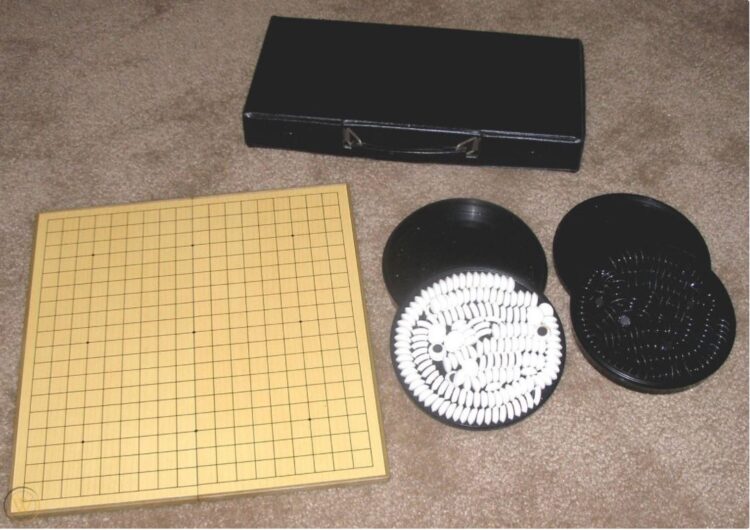
If you don’t have anyone to play Go with in real life, you don’t need a Go set. You can always play on a Go server and review your games online. And if you come to an offline tournament, the organizers will provide Go sets for all participants.
When you’re bored with the classic Go and want some variety
When you’re tired of playing by the standard rules, there are alternatives that add fun to the classic game.
Pair Go. Everything is the same as usual, but it’s played by 4 people at the same board. 2 (male and female) on one team, 2 on the other. Players on the same team are not allowed to talk during the game and their moves alternate. Pair Go is a separate sport in its own right. Numerous pair Go tournaments are held, including the World Pair Go Championship in Japan.
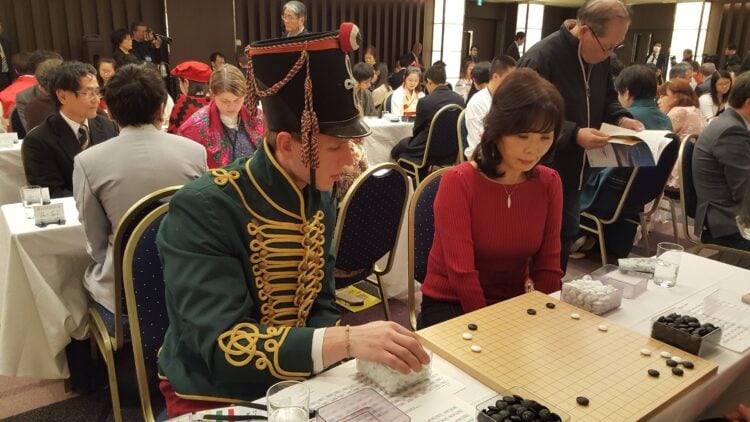
Dango. The most popular of the unusual Go-based games. To understand it in detail, read the following article on Gamerules.

Chapayev. Go pros will judge you for this, but this is a game that kids really like. In fact, the Go board turns into a pool table. One of the videos showing this game has gotten as many as 1.5 million views on YouTube, which is more than even the biggest Go stars could dream of.
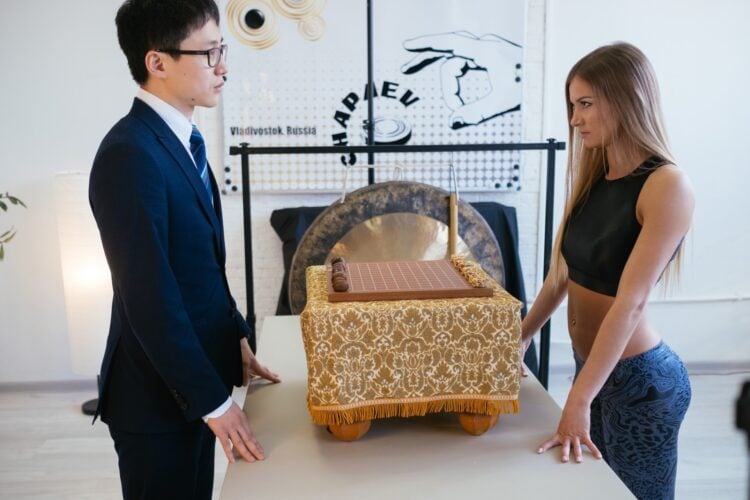
The “kill-all” game. A 17-stone handicap is placed. White’s task is to survive with at least one group. If White lives, she wins the game. I use this exercise with my students. I find it useful for practicing survival and group killing skills, which can be useful in regular Go.
Useful Links
- Sensei Library — One of the oldest websites on the internet dedicated to the game of Go. Go wikipedia.
- Go4Go — regularly updated database with professional players’ game records from various tournaments;
- USGO — American Go Association;
- Baduk Club — 4600 Go players worldwide with search by locations and clubs
About the author:
Alexandr Dinershteyn, 7-time European champion, 3rd dan professional, author of several books about Go, owner of more than 20 websites dedicated to the game of Go. You can find him on Go servers where he plays and teaches under the username “breakfast”.

- Comprehensive Guide to the Board Game Go (weiqi, baduk) - January 23, 2024
- Are Creative Suites Changing Gaming - October 30, 2023
- Crowning the Kings of Solitaire: GameRules Recognizes Solitaired and MobilityWare as top Solitaire Games - October 20, 2023